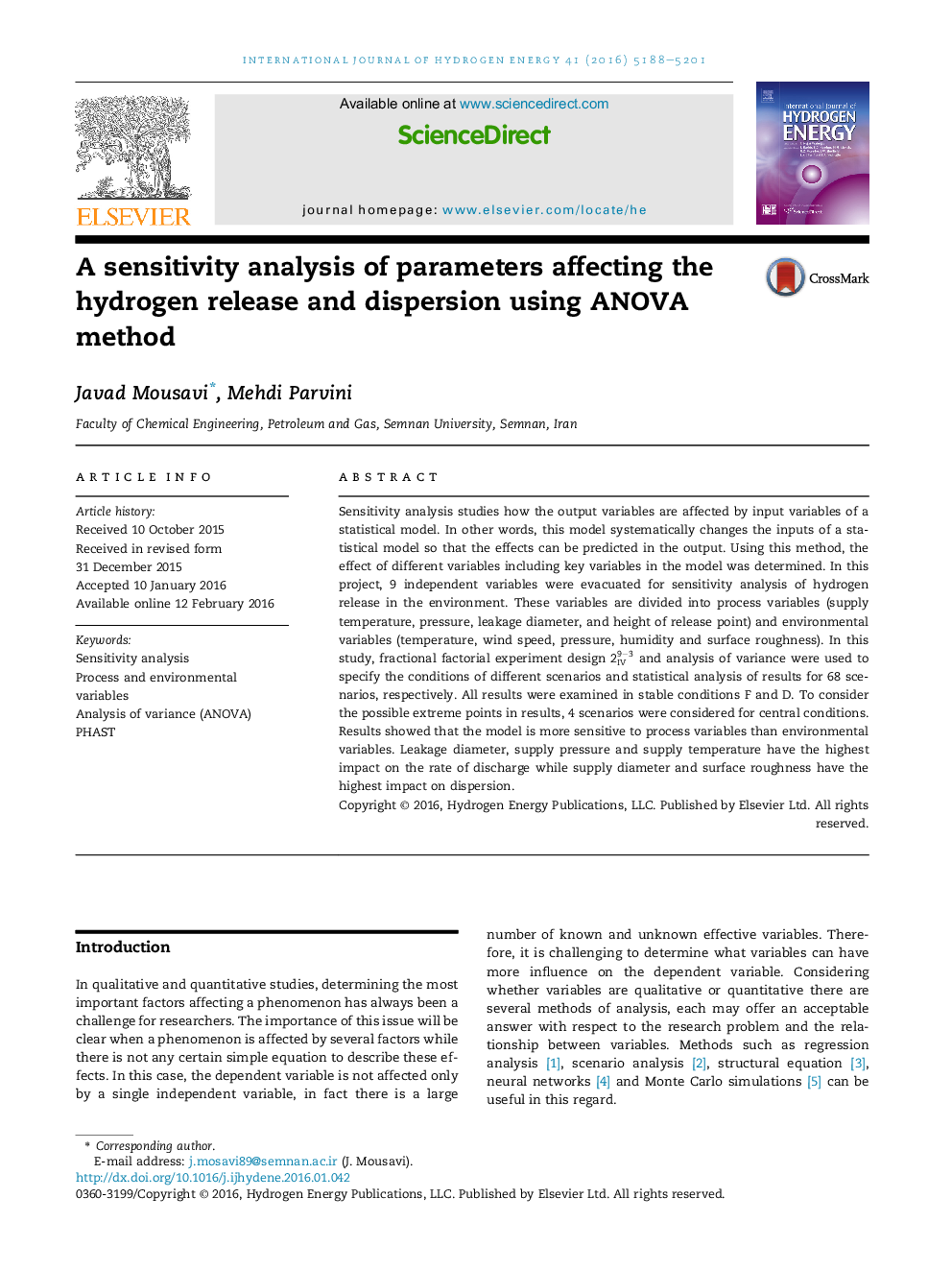| Article ID | Journal | Published Year | Pages | File Type |
|---|---|---|---|---|
| 1268881 | International Journal of Hydrogen Energy | 2016 | 14 Pages |
•Sensitivity analysis is used to determine the key parameters of the model.•Dispersion data is analyzed using factorial designs.•Fractional factorial experiment design 2IV9−3 is used to specify the conditions of different scenarios.•Input parameters examined include process variables and environmental variables.•Analysis of variance is used to for statistical analysis of results.
Sensitivity analysis studies how the output variables are affected by input variables of a statistical model. In other words, this model systematically changes the inputs of a statistical model so that the effects can be predicted in the output. Using this method, the effect of different variables including key variables in the model was determined. In this project, 9 independent variables were evacuated for sensitivity analysis of hydrogen release in the environment. These variables are divided into process variables (supply temperature, pressure, leakage diameter, and height of release point) and environmental variables (temperature, wind speed, pressure, humidity and surface roughness). In this study, fractional factorial experiment design 2IV9−3 and analysis of variance were used to specify the conditions of different scenarios and statistical analysis of results for 68 scenarios, respectively. All results were examined in stable conditions F and D. To consider the possible extreme points in results, 4 scenarios were considered for central conditions. Results showed that the model is more sensitive to process variables than environmental variables. Leakage diameter, supply pressure and supply temperature have the highest impact on the rate of discharge while supply diameter and surface roughness have the highest impact on dispersion.
